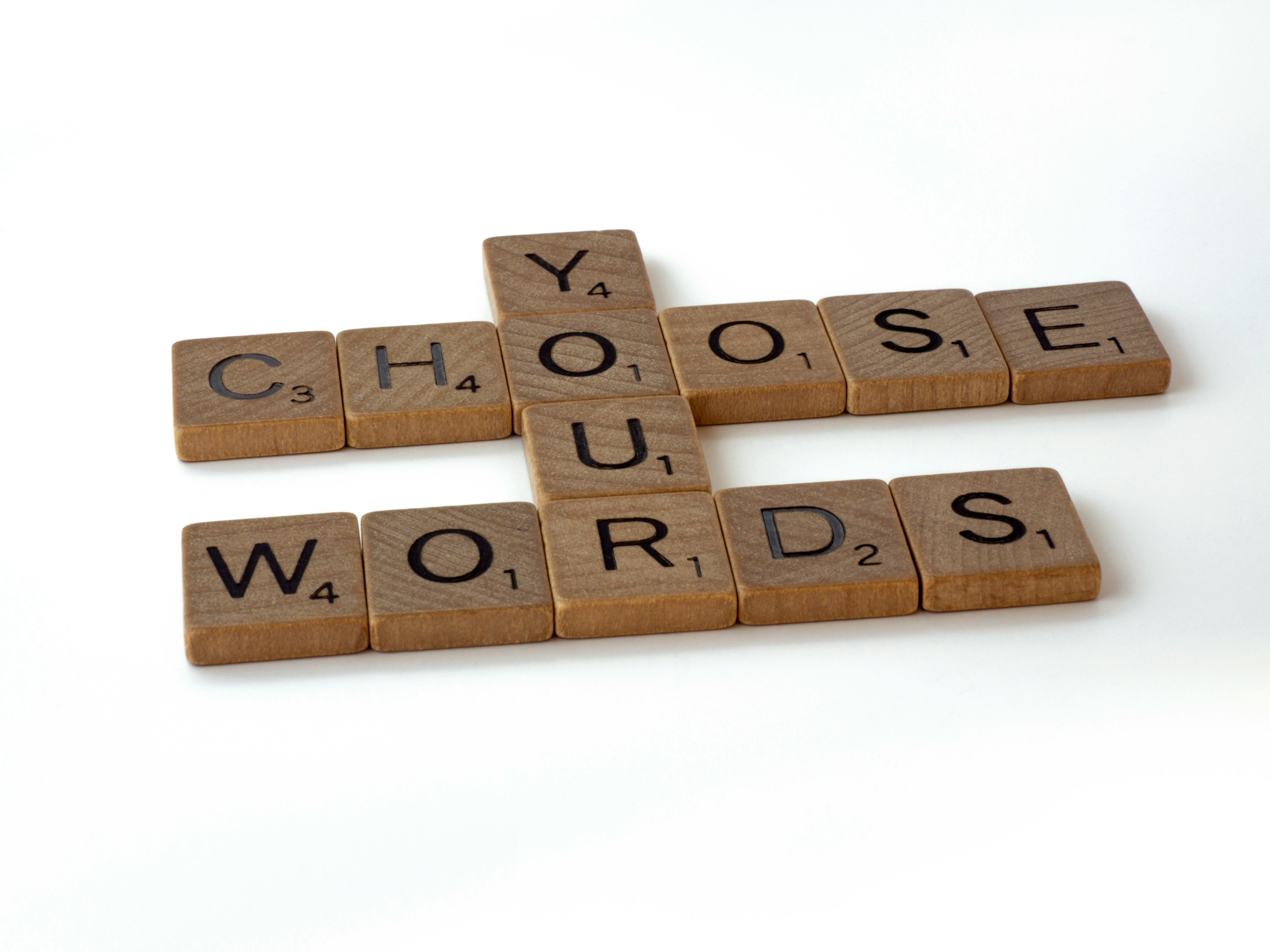< Back
50 Most Powerful Words To Start A Paragraph
Declan Gessel
Apr 25, 2024
Are you looking to enhance your essay writing skills? If so, learning about Words To Start A Paragraph could be invaluable. Understanding how to write an essay can be challenging, but using the right words to start a paragraph can make the process more manageable.
By integrating these words into your writing, you can improve the flow of your arguments and make your ideas stand out more clearly. Being able to use these phrases will help you structure your work more effectively, making it easier for your reader to follow your arguments. So, why not continue reading to learn how to improve your essay-writing skills?
Table of Contents
Choosing The Right Sentence Starter For A Good Reading Experience
Write Smarter Words To Start A Paragraph With Jotbot — Start Writing for Free Today
What Is A Paragraph Starter?

Starting a paragraph the right way is vital to keeping your readers engaged and interested in what you have to say. The opening sentence sets the tone for the rest of the paragraph and can make all the difference in how your writing is received. A captivating opening can grab the reader's attention, making them more likely to continue reading.
A captivating opening sentence sets the tone for the rest of the paragraph. It can pique the reader's interest, making them want to know more about what you have to say. This is especially true if you are writing a persuasive or argumentative piece. The opening sentence can make all the difference in whether or not your reader is convinced by your argument.
The Benefits of Having a Variety of Sentence Starters
Having a variety of sentence starters is also essential to keeping your writing engaging and avoiding repetition. Using the same sentence starter over and over again can make your writing dull and uninteresting, and can even make it confusing. By varying your sentence starters, you can keep your reader engaged and make sure they understand exactly what you're trying to say.
Related Reading
• Persuasive Essay
• Argumentative Essay
• Essay Format
• Expository Essay
• Essay Outline
• How To Write A Conclusion For An Essay
• Narrative Essay
• Transition Sentences
• Rhetorical Analysis Essay
Categorize The Sentence Starters

Let's delve on the following:
Hooks: Grab attention and spark reader interest
Hooks are the opening sentences that are written to captivate the reader’s attention. When I write an article, I try to include a hook to spark the reader’s interest. This helps to pique the reader’s curiosity, encouraging them to keep reading. Hooks come in many forms depending on the goal of the piece. Whether it’s a surprising fact, a rhetorical question, or a bold statement, hooks are an essential part of writing a piece that keeps the reader engaged. A hook can be as simple as starting a sentence with “Did you know…” or “Imagine if…” or “Picture this…”
Transitions: Smoothly connected ideas or introduce new points
Transitional sentences are like bridges between paragraphs. They help to move the writing from one thought to another, guiding readers along the path of the argument. Transitions can take many forms, from simple words and phrases like “for example” or “in addition” to more complex ideas. I use transitions to make my writing more coherent and fluid. Transitions can be the same as using “Moreover, Furthermore, Further, or Additionally.” All variations can be used to link ideas effectively.
Examples: Illustrate concepts with specific cases
Examples are the lifeblood of any argument. They breathe life into your writing and give readers a tangible way to understand abstract ideas. The more specific the example, the more convincing your writing will be. Whether it’s a personal anecdote, a historical event, or a fictional scenario, examples can make or break your writing. There are many ways examples can be presented, such as “For instance, As an illustration, To demonstrate, or To illustrate.” These are all good ways to introduce examples that will clarify your point.
Statistics: Make an impact with data-driven support
Statistics are the hard facts that back up your argument. Whether you’re trying to persuade, inform, or entertain, statistics can add weight to your writing and make your argument more convincing. I use statistics quite often to build authority and credibility in my writing. Statistics can be presented in various ways such as “According to, The data shows, Research indicates, or Studies have shown.” All of these starting phrases introduce statistics effectively.
Figurative Language: Create vivid imagery and engage readers through figures of speech
Figurative language is the paint on the canvas of your writing. It brings your words to life and helps readers imagine the sense of your writing. Whether it’s a simile, metaphor, personification, or hyperbole, figurative language adds color to your writing. I often use figurative language to make my writing more engaging and entertaining. Figurative language can be presented in a variety of ways such as “Like a, As a, As if, or Just like.” These starting phrases introduce figurative language in a way that makes the reader more engaged with the writing.
Jotbot is your personal document assistant. Jotbot does AI note taking, AI video summarizing, AI citation/source finder, it writes AI outlines for essays, and even writes entire essays with Jotbot’s AI essay writer. Join 500,000+ writers, students, teams, and researchers around the world to write more, write better, and write faster with Jotbot.
Write smarter, not harder with Jotbot. Start writing for free with Jotbot today — sign in with Google and get started in seconds.
50 Words To Start A Paragraph To Improve Your Writing

Here are some of the examples of starter words:
Hooks (Grab Attention)
1.Imagine a world where... (Sparks curiosity and sets a fantastical tone)
2.Have you ever wondered... (Prompts the reader to think and engage)
3. In the heart of a thriving city... (Provides a vivid setting description)
4. What if, instead of... (Prompts counterfactual thinking)
5. Let's face it... (Establishes a common ground with the reader)
6. A startling fact: ... (Introduces a surprising statistic)
7. Picture this... (Invites the reader to visualize a scene)
8. Fast forward ten years... (Introduces a future scenario)
9. They say... (Presents a common belief or saying)
10. Can you believe... (Expresses disbelief or highlights something unexpected)
Transitions (Connect Ideas)
11. Building on the previous point... (Connects to prior information)
12. In contrast, ... (Introduces an opposing viewpoint)
13.Furthermore, ... (Adds additional support to a point)
14. This leads us to... (Transitions to a new but related idea)
15. On the other hand, ... (Presents a counterargument)
16. As a result, ... (Highlights the consequences of something)
17. Interestingly enough, ... (Introduces a surprising connection)
18. Similarly, ... (Compares the current idea to a previous one)
19. Notably, ... (Draws attention to a specific detail)
20. To illustrate this point, ... (Provides an example to clarify)
Examples (Illustrate Concepts)
21.For instance, take the case of... (Introduces a relevant example)
22. A perfect illustration of this concept is... (Emphasizes the example's connection)
23. Consider the situation where... (Presents a hypothetical scenario)
24. Let's look at... (Focuses on a specific case or object)
25. One example of this is... (Provides a clear and direct example)
26. Just like... (Uses a familiar analogy to explain a new concept)
27. This can be seen in... (Highlights an instance where the concept applies)
28. Historical evidence suggests that... (Uses historical examples for support)
29. In the real world, ... (Connects the concept to practical applications)
30. Take, for example, ... (Introduces a specific example to elaborate)
Statistics (Data-Driven Support)
31. A recent study found that... (Provides data-driven support)
32. Did you know that... (Creates curiosity about a statistic)
33. Shockingly, ... (Highlights a surprising statistic)
34. Statistics show that... (Introduces relevant data)
35. It's estimated that... (Presents an approximation based on data)
36. According to a survey, ... (References research findings)
37. In terms of numbers, ... (Focuses on the quantitative aspect)
38. On average, ... (Provides a general statistic)
39. Data suggests that... (Presents a conclusion based on analysis)
40. Research indicates that... (Highlights findings from research studies)
Figurative Language (Vivid Imagery)
41. Life is like a journey... (Uses a metaphor to introduce a concept)
42. Her voice was as smooth as silk... (Uses a simile for description)
43. The city lights twinkled like a million fireflies... (Creates a vivid image with a simile)
44. Time seemed to crawl by... (Uses personification to describe time)
45.The weight of expectation hung heavy in the air... (Uses figurative language to create a sense of atmosphere)
46. Her eyes sparkled with mischief... (Uses figurative language to describe emotions)
47. The silence was deafening... (Uses hyperbole to emphasize a point)
48. The forest floor was a carpet of fallen leaves... (Uses a metaphor to describe a scene)
49. He fought like a lion... (Uses a simile to describe courage)
50. The storm raged, waves crashing on the shore. (Simple and direct description)
Related Reading
• Essay Structure
• Types Of Essays
• How To Write A Narrative Essay
• Synthesis Essay
• Descriptive Essay
• How To Start Off An Essay
• How To Write An Analytical Essay
• Write Me A Paragraph
• How To Write A Synthesis Essay
Choosing The Right Sentence Starter For A Good Reading Experience

Different sentence starters serve different purposes, such as grabbing attention, connecting ideas, or illustrating points. When considering the opening sentence, think about how it relates to your writing goals and audience. Are you trying to introduce a new idea, provide an example, or summarize a point? I recommend selecting the best sentence starter based on these considerations.
Tips for Selecting the Best Sentence Starter
When it comes to selecting the best sentence starter for your paragraph, here is my advice:
Consider the purpose of your paragraph
Is it meant to introduce a new idea, provide an example, or summarize a point?
Know your audience
What kind of tone and style are most likely to resonate with them?
Aim for variety
Don't overuse the same sentence starter repeatedly throughout your writing.
Choosing the right words to start a paragraph can help you set the tone for the rest of your work. Keep in mind, the goal is to engage your audience and keep them reading. So, take some time to think about the best sentence starter for your writing goals and audience.
Furthermore, advanced AI tools can make it easier to shape your writing by providing additional support. These AI tools even allow you to select a tone, and the AI will offer suggestions to help you write a paragraph accordingly. Choosing the right words at the start of your paragraphs can set the tone for the rest of the essay, so you can keep your audience engaged.
Related Reading
• Critical Analysis Essay
• How To Write A Personal Essay
• Chat Gpt Essay Writer
• How To Write An Outline For An Essay
• What Makes A Good Thesis Statement
• Essay Writing Tools
• How To Write A 5 Paragraph Essay
• How To Write A Rhetorical Analysis Essay
• First Person Essay
• How To Write A Header For An Essay
• Memoir Essay
• Formula For A Thesis Statement
Write Smarter Words To Start A Paragraph With Jotbot — Start Writing for Free Today
Jotbot is my go-to personal document assistant. It helps me organize and craft documents, notes, and essays with incredible efficiency. When engaged with Jotbot, I can have AI outlines for essays, AI note taking, AI video summarizing, AI citation/source finding, and even have entire essays written, all thanks to Jotbot's capabilities.
I've used it to improve my writing skills and enhance my productivity, as it has been designed to support over 500,000 writers, students, teams, and researchers worldwide. CTAs like "Write smarter, not harder with Jotbot" are synonymous with the service, and getting started with Jotbot is as easy as signing in with Google and beginning.
Write more, better, faster.
Your personal AI document assistant












